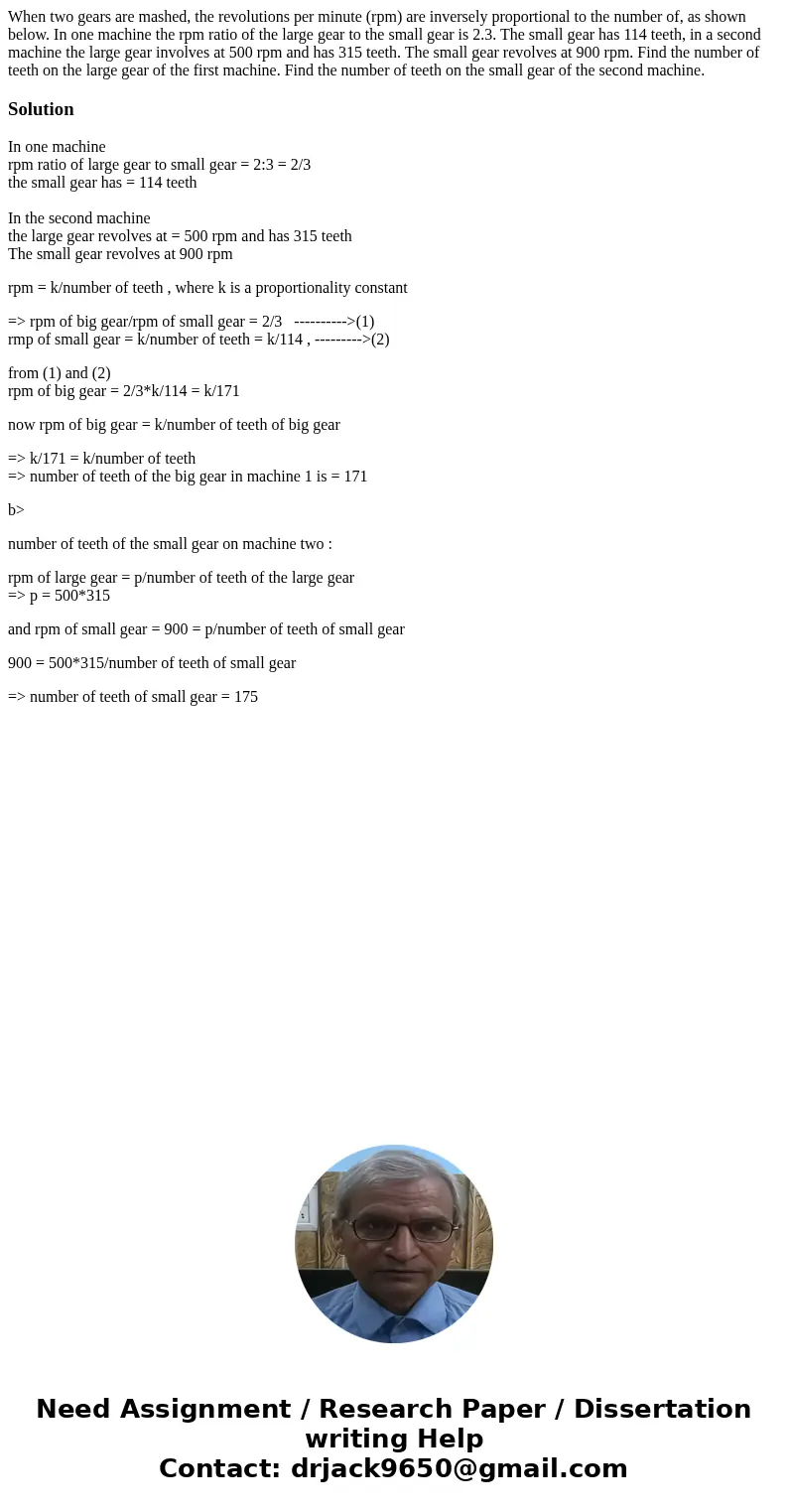When two gears are mashed the revolutions per minute rpm are
Solution
In one machine
rpm ratio of large gear to small gear = 2:3 = 2/3
the small gear has = 114 teeth
In the second machine
the large gear revolves at = 500 rpm and has 315 teeth
The small gear revolves at 900 rpm
rpm = k/number of teeth , where k is a proportionality constant
=> rpm of big gear/rpm of small gear = 2/3 ---------->(1)
rmp of small gear = k/number of teeth = k/114 , --------->(2)
from (1) and (2)
rpm of big gear = 2/3*k/114 = k/171
now rpm of big gear = k/number of teeth of big gear
=> k/171 = k/number of teeth
=> number of teeth of the big gear in machine 1 is = 171
b>
number of teeth of the small gear on machine two :
rpm of large gear = p/number of teeth of the large gear
=> p = 500*315
and rpm of small gear = 900 = p/number of teeth of small gear
900 = 500*315/number of teeth of small gear
=> number of teeth of small gear = 175

 Homework Sourse
Homework Sourse